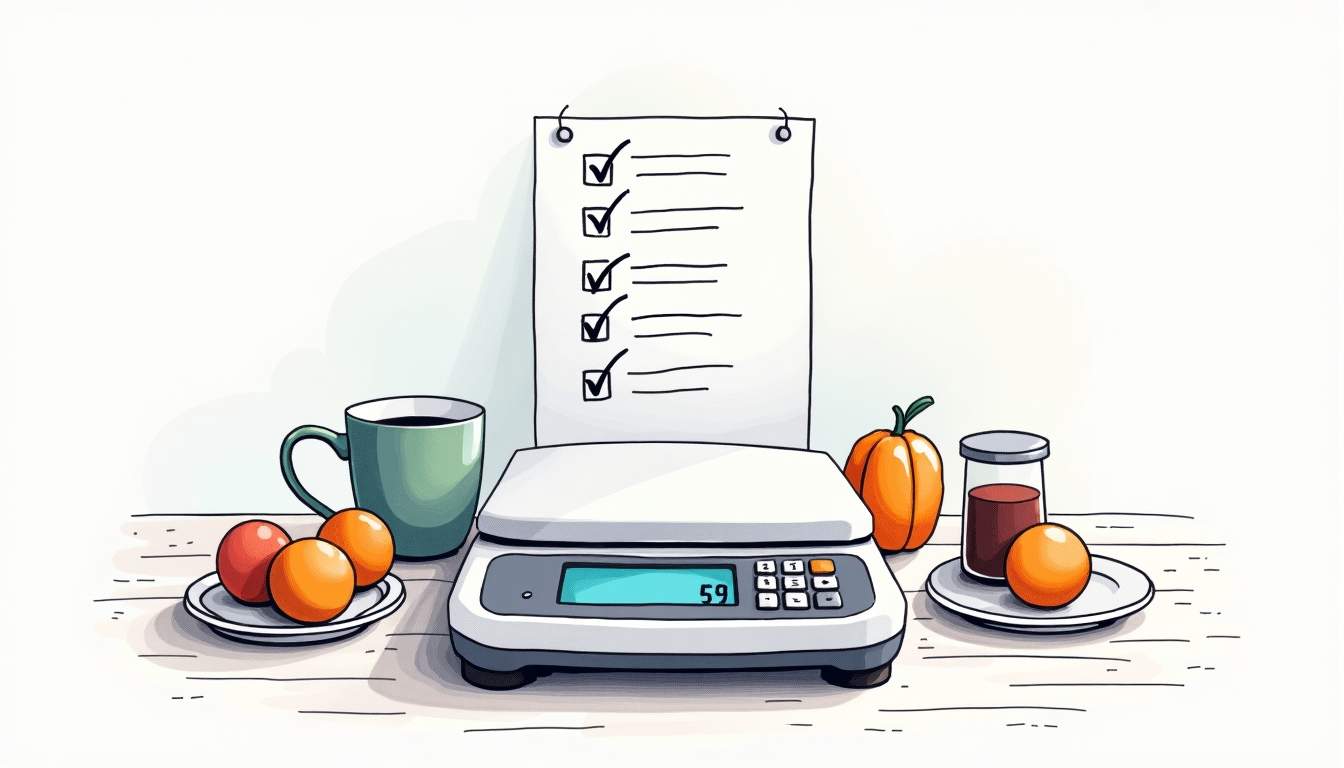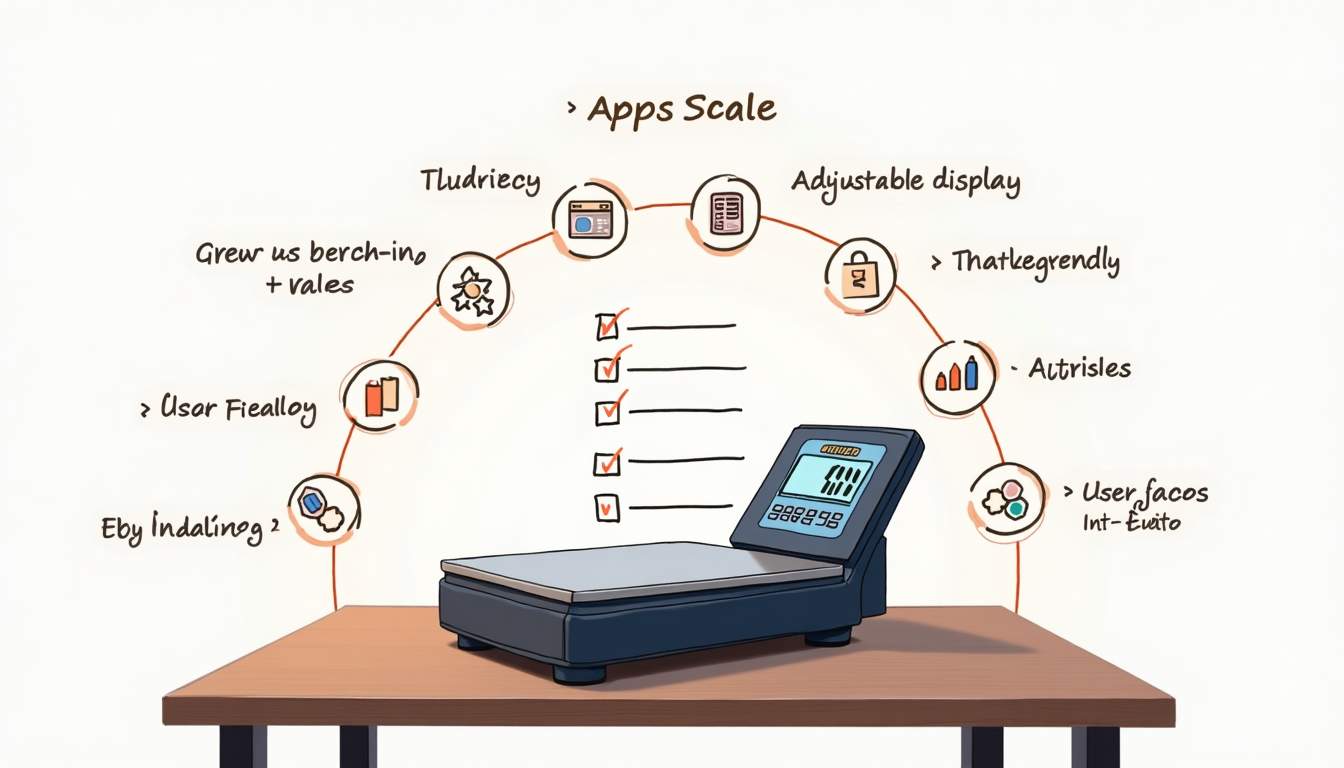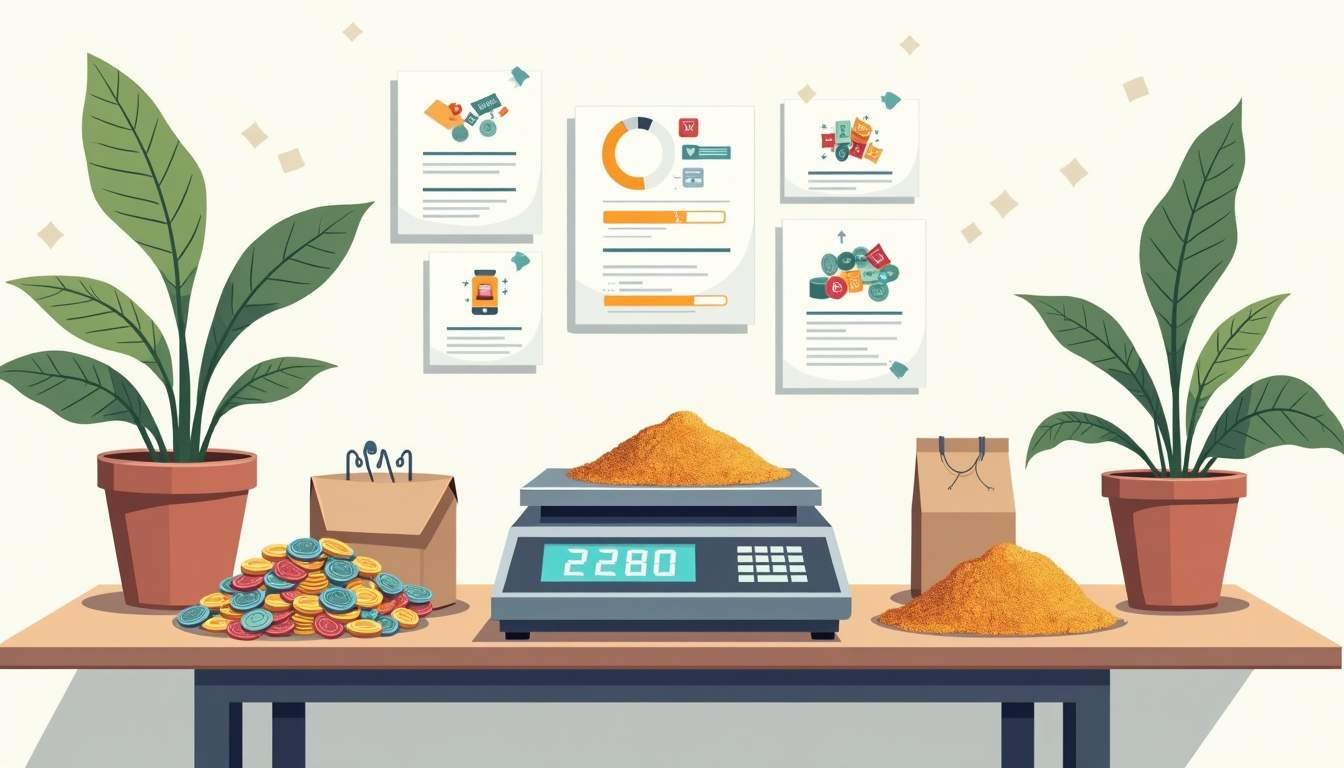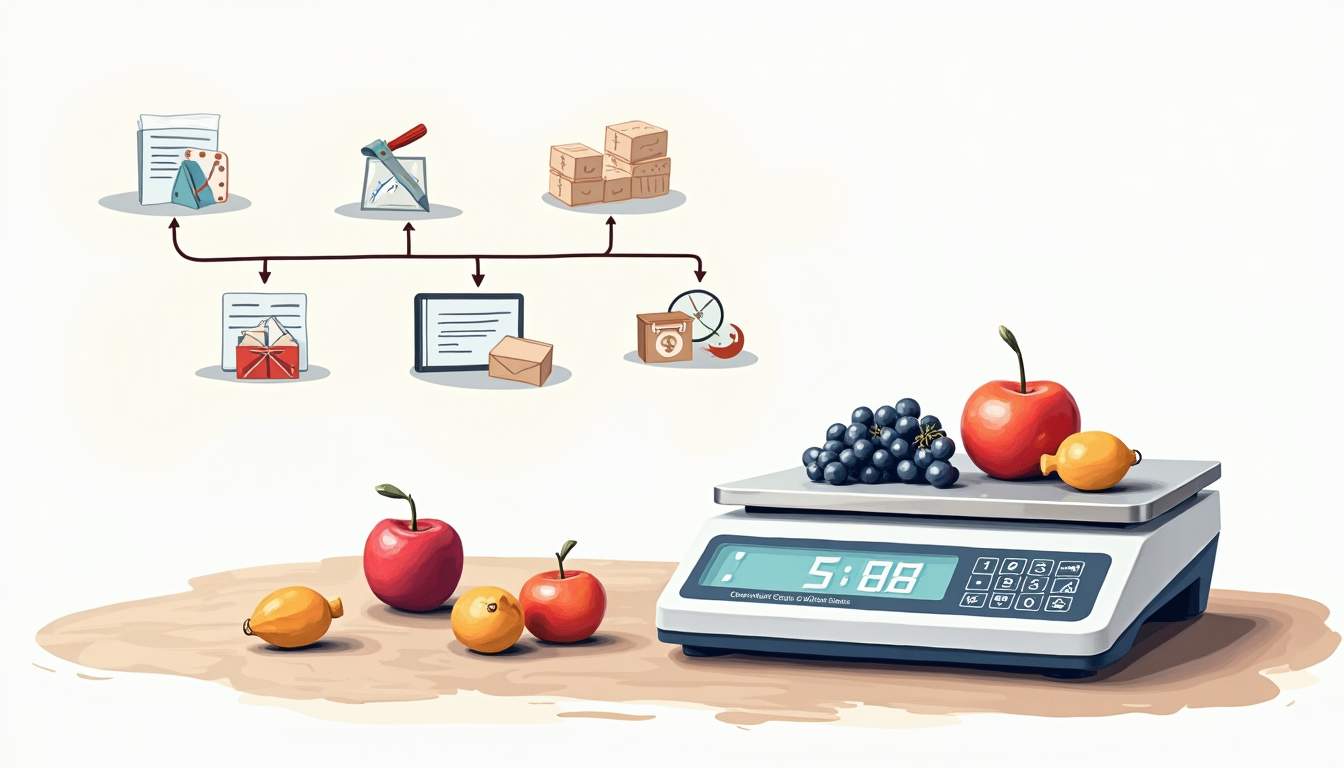
In industries where precision matters, counting scales play a vital role in ensuring accurate inventory management, quality control, and production efficiency. Whether you’re working in manufacturing, pharmaceuticals, electronics, or retail, selecting the right counting scale can make a significant difference in your operations. But with so many options on the market, how do you choose a counting scale that delivers the accuracy you need?
This comprehensive guide will walk you through the essential factors to consider when choosing a counting scale, helping you make an informed decision that fits your specific requirements.
Understanding Counting Scales and Their Importance
Counting scales are specialized weighing devices designed to count large quantities of small, uniform items quickly and accurately. Instead of manually counting hundreds or thousands of parts, a counting scale measures the total weight and calculates the number of pieces based on the average weight of a single item.
This method saves time, reduces human error, and improves inventory tracking. However, the accuracy of the count depends heavily on the scale’s precision and how well it is calibrated for the items being counted. Many modern counting scales come equipped with advanced features such as programmable tare weights, allowing users to subtract the weight of containers or packaging, which further enhances the accuracy of the count. Additionally, some models offer connectivity options, enabling data transfer to inventory management systems, which streamlines the entire counting and tracking process. For more information or to explore reliable counting scales, visit Scales 4 U.
Why Accuracy Matters in Counting Scales
Accuracy in counting scales is crucial because even a small error can lead to significant discrepancies in inventory, resulting in financial losses, production delays, or compliance issues. For example, in pharmaceutical manufacturing, an inaccurate count could affect dosage and safety. In electronics, incorrect part counts can disrupt assembly lines and quality assurance. The repercussions of inaccuracies extend beyond immediate operational challenges; they can also impact customer trust and brand reputation. A company that consistently delivers incorrect orders may find itself facing dissatisfied customers and potential loss of business.
Therefore, choosing a scale that consistently delivers precise measurements is essential for maintaining operational integrity and customer satisfaction. Regular maintenance and calibration of counting scales are also vital practices that businesses should adopt. Many organizations implement a routine schedule for checking the accuracy of their scales, often using certified calibration weights to ensure that the devices are functioning correctly. This proactive approach not only safeguards against errors but also enhances the overall efficiency of inventory management processes. Furthermore, training staff on the proper use of counting scales can significantly improve accuracy, as knowledgeable operators are less likely to make mistakes during the counting process.
Key Features to Look for in a Counting Scale
When evaluating counting scales, several features directly impact accuracy and usability. Understanding these features will help you select a scale that aligns with your operational needs.

1. Resolution and Readability
Resolution refers to the smallest increment of weight the scale can detect, while readability is the smallest displayed unit. For counting scales, higher resolution means the scale can detect tiny differences in weight, which translates to more accurate piece counts.
For example, if you’re counting very small items like screws or electronic components, a scale with a resolution of 0.001 grams or better is ideal. Larger items may not require such fine resolution, but it’s important to match the scale’s sensitivity to the size and weight of your parts. Additionally, some advanced counting scales offer the option to switch between different units of measurement, such as grams, ounces, or pounds, which can be particularly useful in diverse operational settings where various units are preferred.
2. Capacity and Weighing Range
The scale’s maximum capacity must accommodate the total weight of the items you intend to count. Overloading a scale can damage it or cause inaccurate readings. Conversely, using a scale with too large a capacity for small items may reduce accuracy.
Consider both the minimum and maximum weight ranges you’ll be working with. Some scales offer multiple weighing modes or adjustable ranges to handle different batch sizes effectively. Furthermore, it’s beneficial to look for scales that provide a visual or audible alert when nearing capacity limits, ensuring that operators can avoid potential overload situations and maintain the longevity of their equipment.
3. Calibration and Tare Functionality
Proper calibration ensures the scale provides accurate measurements over time. Look for scales that support easy calibration with certified weights. Some models offer automatic or semi-automatic calibration features, which simplify maintenance.
The tare function allows you to subtract the weight of containers or packaging, so only the net weight of the items is counted. This feature is essential for accurate counting when using trays, bins, or other holding devices. Additionally, some counting scales come equipped with memory functions that can store tare weights for different containers, making it even easier to switch between various items without recalibrating each time.
4. Display and User Interface
A clear, easy-to-read display helps reduce operator errors. Backlit LCD screens with large digits are preferable, especially in environments with poor lighting. Some scales also offer touchscreen interfaces or programmable keys for quick access to common functions.
Intuitive controls and menu navigation can speed up the counting process and minimize training time for new users. Some advanced models even feature customizable display settings, allowing users to adjust brightness, contrast, and layout to suit their specific preferences and working conditions, enhancing overall usability.
5. Connectivity and Data Management
Modern counting scales often include connectivity options such as USB, RS232, or Bluetooth. These features allow you to transfer data directly to computers, printers, or inventory management systems, reducing manual data entry and errors.
Consider whether you need integration with existing software or automated reporting capabilities to streamline your workflow. Furthermore, some scales come with built-in software that can generate reports or analytics, providing insights into inventory trends and helping businesses make informed decisions based on real-time data.
6. Durability and Build Quality
The environment in which the scale will be used impacts the type of construction you need. For industrial or warehouse settings, look for scales with robust metal housings, dust and water resistance, and shock protection.
Scales designed for cleanroom or laboratory use may require stainless steel surfaces and easy-to-clean designs to meet hygiene standards. Additionally, consider the weight of the scale itself; a heavier scale may provide better stability during use, while lighter models might be more portable and easier to relocate as needed. It’s also worth checking for warranties or service agreements that ensure support in case of wear and tear, further protecting your investment in quality equipment.
Assessing Your Specific Counting Needs
Before purchasing a counting scale, it’s important to analyze your unique requirements. This assessment will guide you toward the most suitable model and features.

Item Characteristics
Consider the size, shape, and weight consistency of the items you need to count. Uniform items like screws or pills are easier to count accurately than irregularly shaped or mixed-weight components.
If your parts vary significantly in weight, you may need a scale with advanced averaging or multiple sample capabilities to improve count accuracy.
Batch Size and Throughput
Think about the typical batch sizes you handle and how quickly you need to count them. Larger batches require scales with higher capacity and faster processing speeds.
High-throughput environments may benefit from scales with automated counting features or integration with conveyor systems to speed up operations.
Environmental Conditions
Temperature, humidity, dust, and vibration can all affect scale performance. If your counting scale will be used in harsh or variable conditions, choose a model designed to withstand those challenges.
For example, scales with built-in vibration dampening or environmental compensation features maintain accuracy in less-than-ideal settings.
Calibration and Maintenance for Long-Term Accuracy
Even the best counting scale requires regular calibration and maintenance to ensure ongoing accuracy. Establishing a routine calibration schedule and proper care practices will extend the life of your scale and maintain reliable performance.
Calibration Best Practices
Use certified calibration weights that match the scale’s capacity and resolution. Follow the manufacturer’s instructions for calibration procedures, and document each calibration event for quality control records.
Some industries require periodic third-party calibration or certification to meet regulatory standards. Ensure your scale supports these requirements if applicable.
Maintenance Tips
Keep the scale clean and free of debris, especially on the weighing platform. Avoid overloading or dropping heavy items onto the scale, as this can damage sensors.
Inspect cables, connectors, and displays regularly for signs of wear or damage. Replace batteries or power supplies as needed to prevent interruptions.
Popular Counting Scale Technologies and Innovations
Counting scale technology has advanced significantly, offering new features that enhance accuracy and usability.
Multi-Sampling and Averaging
Some scales allow you to take multiple sample weights to calculate a more accurate average piece weight. This is especially useful for items with slight weight variations, improving count precision.
Automatic Piece Weight Recognition
Newer models can automatically detect and store piece weights without manual input, reducing setup time and operator error.
Wireless and Cloud Connectivity
Wireless scales can transmit data in real-time to cloud-based inventory systems, enabling remote monitoring and analytics. This connectivity supports better decision-making and inventory control.
Touchscreen Interfaces and Customizable Software
Advanced user interfaces allow customization of counting modes, data output formats, and integration with other business systems, making scales more versatile and user-friendly.
Conclusion
Choosing the right counting scale for accuracy involves a careful evaluation of your operational needs, item characteristics, and environmental conditions. Prioritize features such as resolution, capacity, calibration options, and connectivity to ensure you get a scale that delivers reliable, precise counts.

Investing time in selecting the appropriate scale and maintaining it properly will pay off in improved efficiency, reduced errors, and better inventory management. With the right counting scale, your business can achieve higher accuracy and productivity, no matter the industry.
